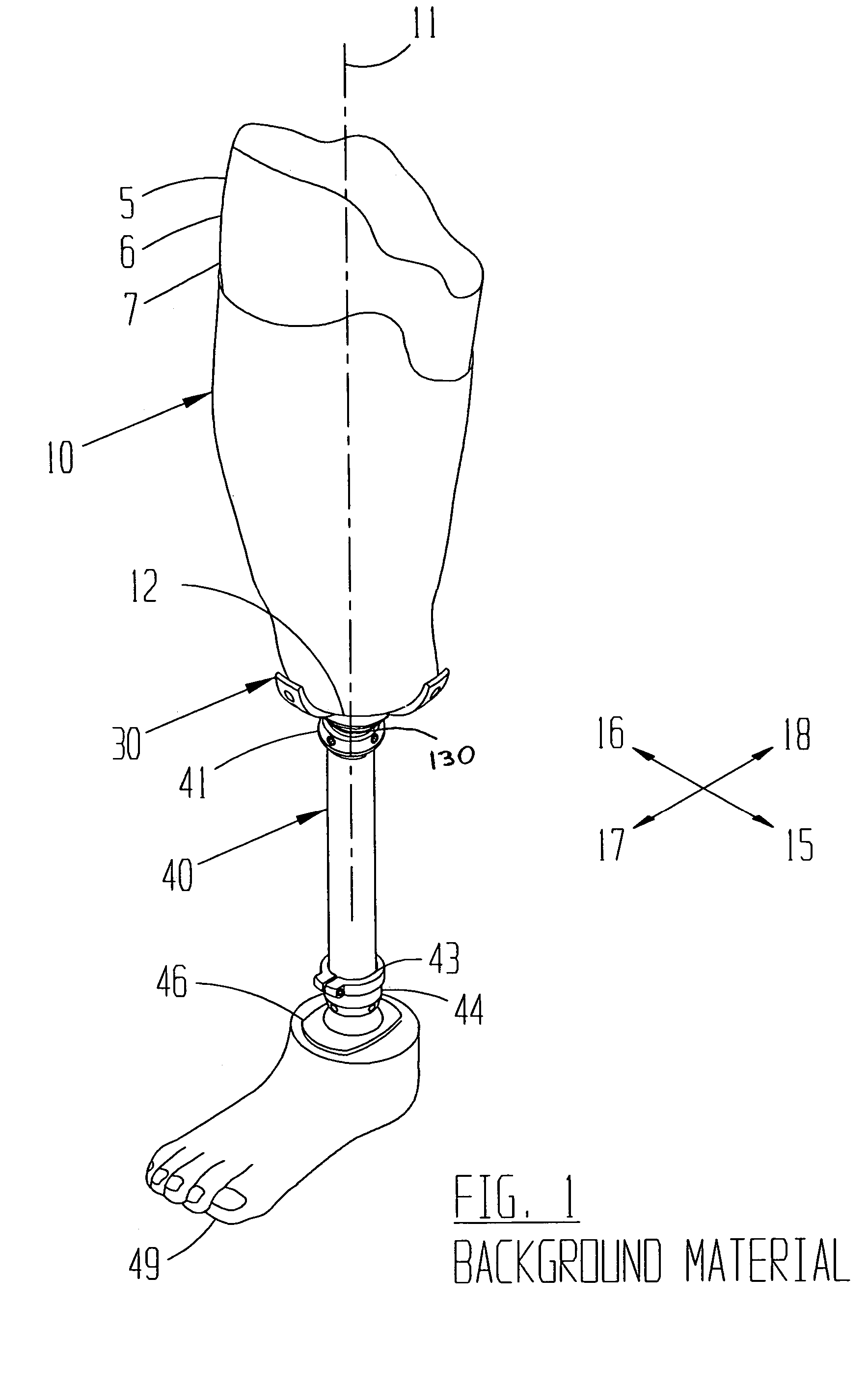Limb with modular prosthetic components
a modular, prosthetic technology, applied in the field of modular prosthetic limb components, can solve the problems of inability to longitudinally adjust the pylon with respect, inability to cut the pylon, and inability to achieve the effect of longitudinal adjustment, quick and easy interchange, and reduced hassle and cos
- Summary
- Abstract
- Description
- Claims
- Application Information
AI Technical Summary
Benefits of technology
Problems solved by technology
Method used
Image
Examples
Embodiment Construction
[0056]While the invention will be described in connection with several preferred embodiments, it will be understood that it is not intended to limit the invention to those embodiments. On the contrary, it is intended to cover all alternatives, modifications and equivalents as may be included within the spirit and scope of the invention as defined by the appended claims.
[0057]Turning now to FIGS. 4 and 5, a first module 50 is provided. According to one aspect of the present invention, the module 50 can be a sleeve 60 or sleeve module. The sleeve 60 is preferably made of Titanium allow. However, other materials can be used without departing from the broad aspects of the present invention. The sleeve 60 has a first end 65. The sleeve 60 has a clamp 66 on the exterior surface of the first end 65 and is threaded with threads 67 on the interior surface of the first end. Opposed to the first end 65 is a second end 70. The second end 70 is similar to the first end 65, and comprises a clamp ...
PUM
 Login to View More
Login to View More Abstract
Description
Claims
Application Information
 Login to View More
Login to View More - R&D
- Intellectual Property
- Life Sciences
- Materials
- Tech Scout
- Unparalleled Data Quality
- Higher Quality Content
- 60% Fewer Hallucinations
Browse by: Latest US Patents, China's latest patents, Technical Efficacy Thesaurus, Application Domain, Technology Topic, Popular Technical Reports.
© 2025 PatSnap. All rights reserved.Legal|Privacy policy|Modern Slavery Act Transparency Statement|Sitemap|About US| Contact US: help@patsnap.com



